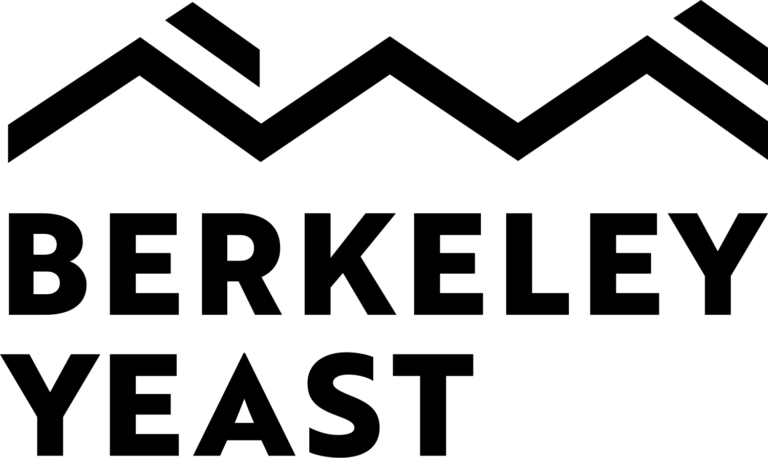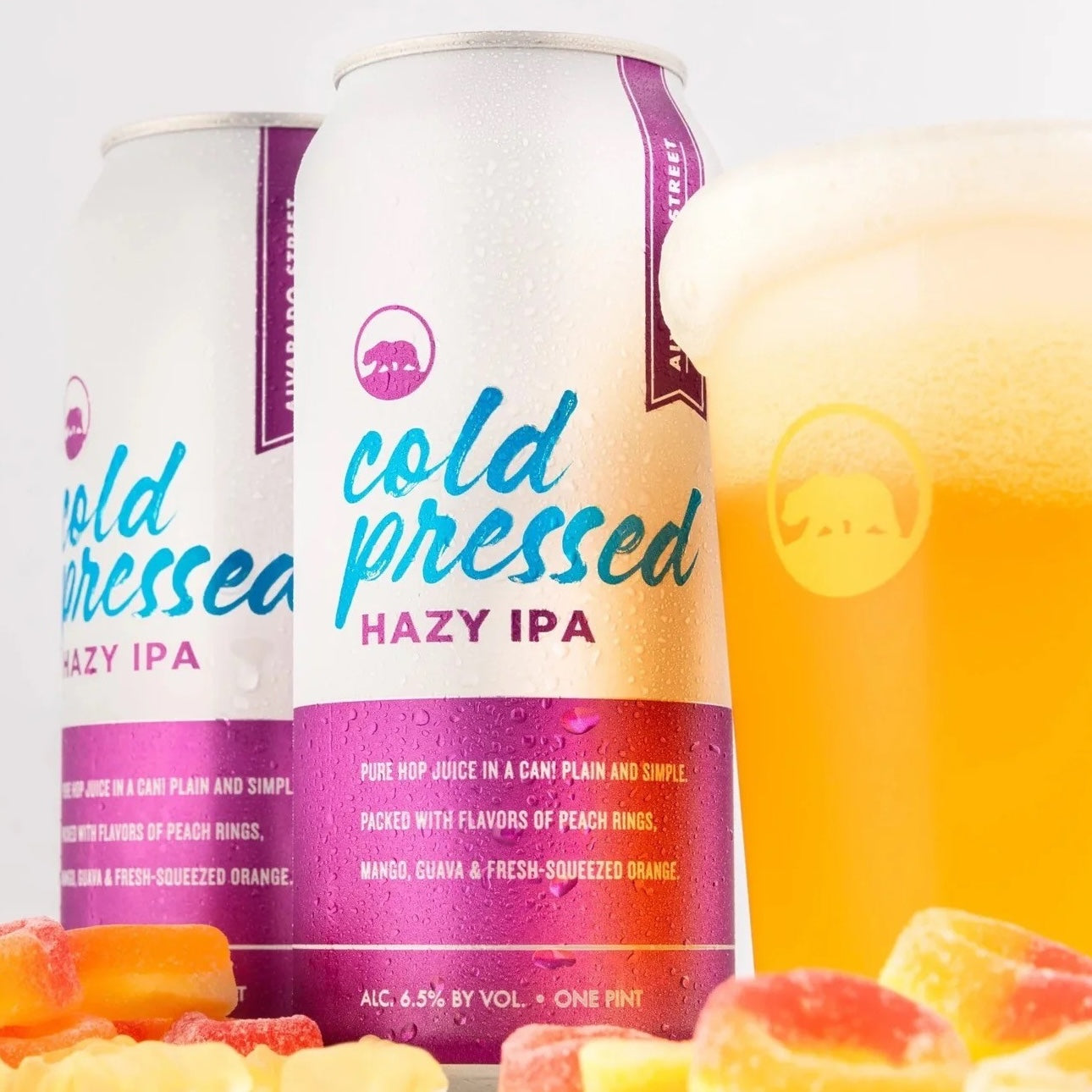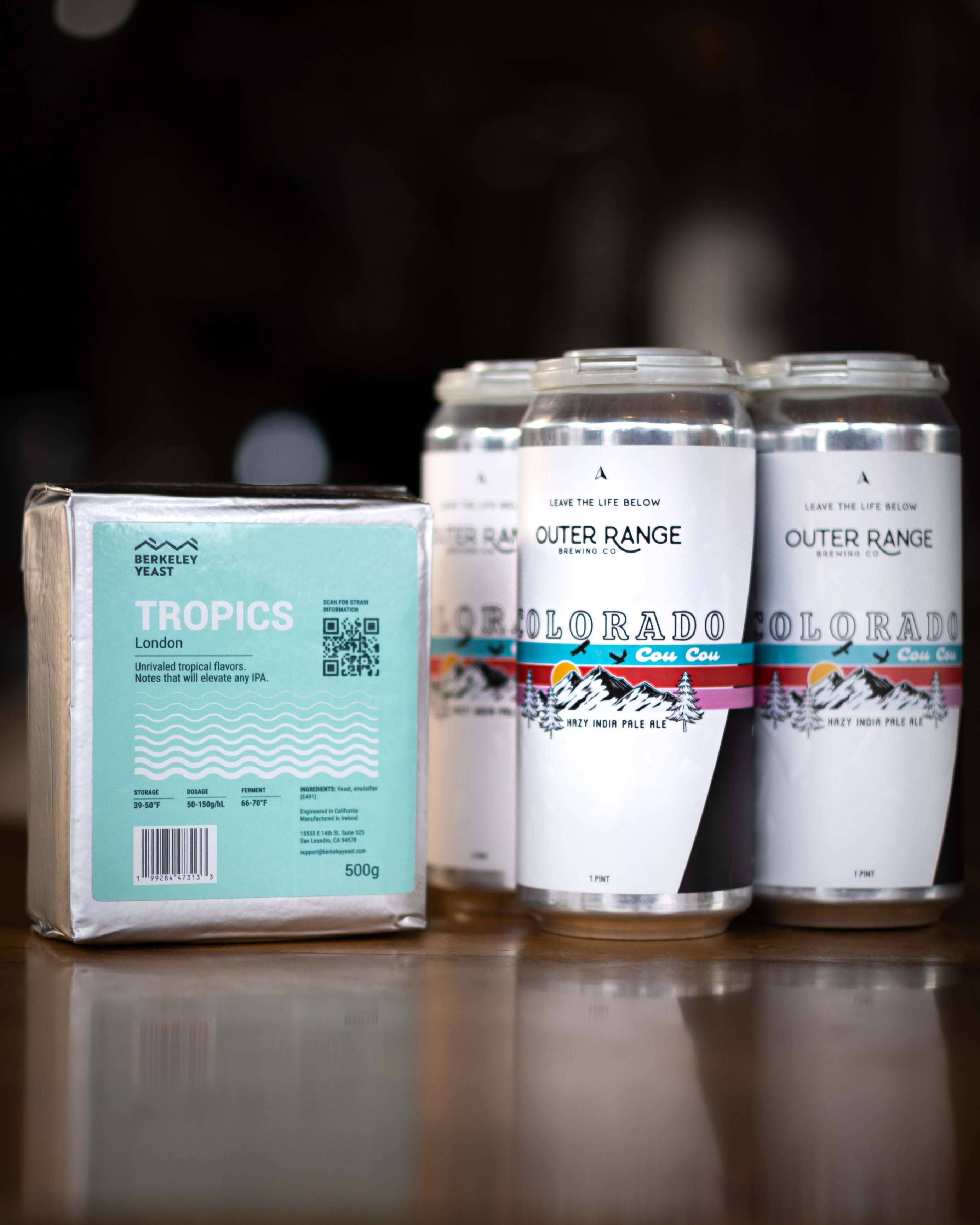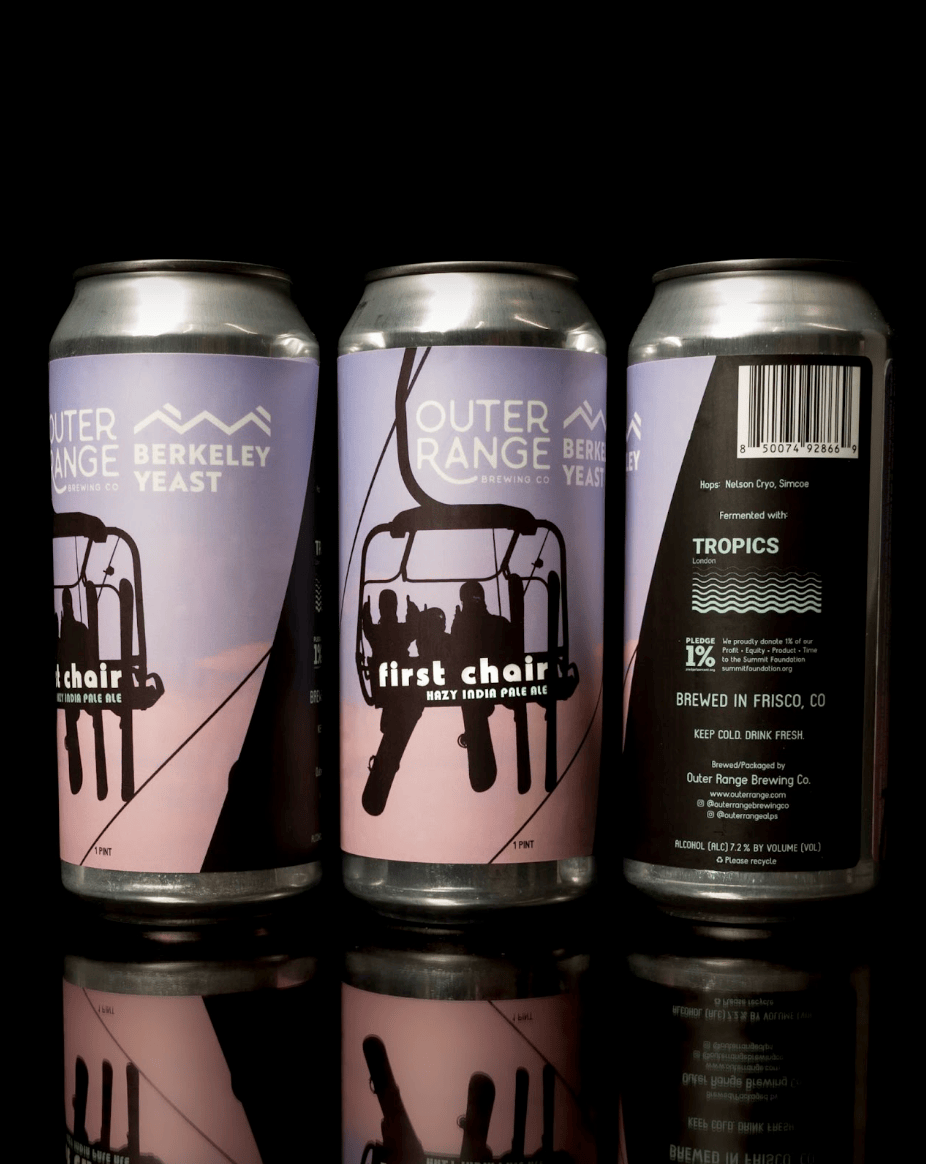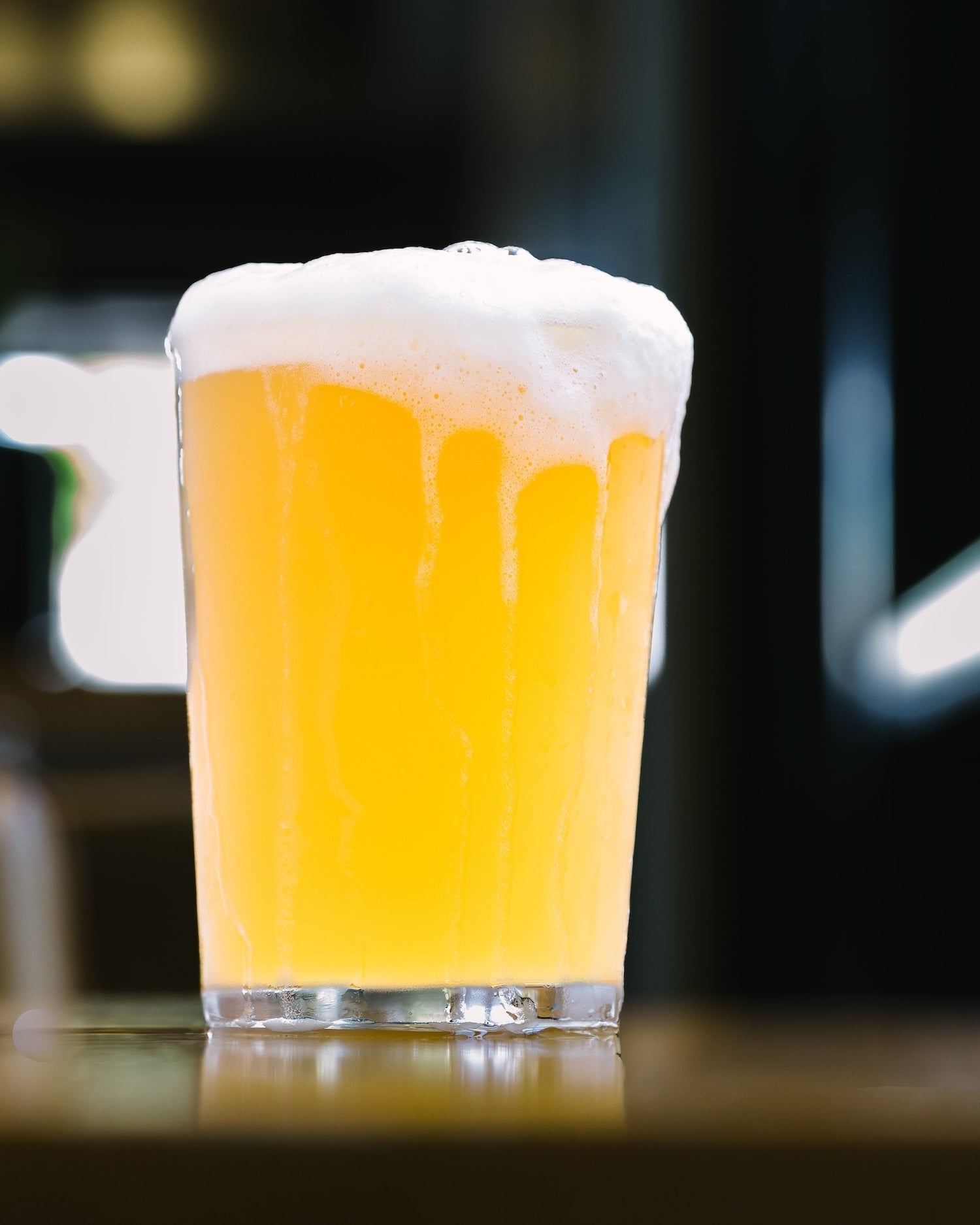As the owner of Upward Brewing, a small rural brewery in New York State’s Catskills region, Dana Ball doesn’t get to handpick the choicest hops. “We have to buy different harvests,” says Ball, who opened Upward in 2019 in Livingston Manor, about 55 miles southwest of Woodstock. “After we figure something out and try buying those hops again, it’s already a different harvest or batch.”
Ball, who is also the brewer, builds that variability into his tap list with the Hex series of experimental hazy IPAs. He’ll tweak the grain bill, hops, or yeast strain to create a new IPA. Last year, he trialed Tropics London, a Berkeley Yeast strain bioengineered to produce the flavor-active compounds that create tropical flavors of passion fruit and guava—neither fruit nor hops required.
Tropics London magnified the aromas in Ball’s hazy IPAs and created more consistent beer. He could pour pints of massively tropical IPAs, no matter what hop varieties were in his cold box. “Hex is our top seller now,” says Ball, who brews a monthly 40-barrel batch with Tropics London.
Making hazy IPAs was once a mistake, an unclear sign that brewing went awry. Bitter and translucent IPAs, perhaps tasting of pine resin and lemon pith, dominated sales from California and all points east. A decade ago, that shifted as Northeast brewers began making IPAs with oats and wheat, which contributed a smooth mouthfeel and cloudy hue, and new hop varieties like America’s tropical Citra and Australia’s melon-like Galaxy.
Brewers fermented these next-generation IPAs with less-attenuative strains like London Ale yeast that left residual sweetness and lent fruity aromas. Customers clamored for these softer, sweeter, fruitier IPAs, snapping up canned four-packs. As hazy IPAs multiplied nationwide, so did the hops.
Double, tripling, and even quadrupling the dry hopping in IPAs became a bluntly effective, yet expensive and wasteful approach with unwanted side effects such as astringency or heartburn. To minimize ingredients and maximize fragrance, science-minded Berkeley Yeast used gene-editing technology to make London Ale create complex fruity flavors.
“It’s plug-and-play to create a more tropical beer,” says Nick Harris, the cofounder of the San Leandro, California, tech startup. The strain only produces desirable flavor-active compounds without off flavors. “Tropics London can be used in pretty much any hazy IPA recipe.” (The company’s sibling strain, Tropics Vermont, has a dryer finish.)
Tropics London Can Save Dollars and Increase Scents
Historically, many modern IPAs have leaned on clean-fermenting, highly attenuative “Chico” yeast. (Chico refers to Sierra Nevada’s California hometown, where the strain is said to originate.) Chico creates a clean platform for hop expression, such as citrusy Amarillo or Cascade’s pine and grapefruit pop. Increasing the aroma of a pale ale or IPA historically meant increasing dry hopping. But whole-cone and pelletized hops soak up wort like sponges; bigger aromas lead to lower yields.
Tropics London acts as an ingredient replacement, letting breweries drop dry hopping rates while increasing desired aromatics. “The flavor intensity is equivalent to about two pounds of hops per barrel,” Harris says. “It’s a predictable way of hitting this tropical profile.”
With Hex, Ball of Upward has cut his dry hopping in half. He’s also saving money on antacid pills. “I get heartburn from drinking a lot of big hoppy beers, and I don’t get that anymore,” he says. Tropics London helps the brewery create IPAs with an “ease of drinkability.”
J.C. Hill, the cofounder of Alvarado Street Brewery in Monterey, California, wanted to make a hazy IPA that’s welcoming in both flavor and price point; increasing the hopping rate increases a beer’s price tag, and a $24 four-pack is a hard sell to many drinkers. So he built a recipe around Tropics London and three hop varieties that impart flavors evocative of kid-favorite candies including Lifesavers, gummy bears, and peach rings. “They line up super-well with the passion fruit and guava flavors you get from the yeast,” says Hill, who calls Tropics “a game changer.”
Cold Pressed, as the year-round hazy IPA is called, uses less than two pounds of hops per barrel. (It sells for $18 per four-pack at Alvarado Street.) Tropics London has multiple value props, helping Alvarado Street both save money and create striking scents. “We couldn’t really achieve that with your basic London Ale III and four or five pounds of hops per barrel.”
Turn Up Tropics, Turn Up the Fragrance
American culture has a maximal approach to most everything, be it razzle-dazzle action movies, triple-meat pizzas, or IPAs. Why settle for a subtle scent when you can fill a can with fragrance? Some breweries are using Tropics London to hulk-out an IPA’s aromatics.
The yeast strain is also a great tool for breweries looking to “coax as much tropical flavor out of every ingredient,” Harris says. “Breweries can take a recipe that already has a gazillion pounds per barrel of hops and then pack even more flavor into it.”
Moksa Brewing Company in Rocklin, California, about 20 miles northeast of Sacramento, specializes in what they call “progressive IPAs” that feature the latest hops and brewing techniques. When head brewer Cory Meyer heard about Tropics London, “we jumped on the opportunity,” he says.

Cost savings weren’t a concern. “I’ve never reduced the dry hop because if I can get more flavor, I’m always going to go for that,” says Meyer, who uses Tropics London in most of the brewery’s hazy IPAs. “Rather than save a few hundred bucks on hops in a beer, I’d rather that beer just be over-the-top and more memorable.”
Meyer sometimes ratchets aroma higher by using Tropics London and Berkeley Yeast’s Tropics Boost. It’s pure precursors, an extract purified from plants that works in conjunction with Tropics to dial up the notes of guava and passion fruit. Last year, Meyer brewed a simple blonde ale and fermented it with Tropics London, and then used Tropics Boost. “The fruitiness was unlike anything else that you get from hops,” he says.
Harris thinks of Tropics Boost as a fragrant dimmer switch that can be adjusted to a brewer’s liking. A full dose can deliver the equivalent of six pounds of hops per barrel, or brewers can augment tropical flavors with a touch of Tropics Boost. “You can hit the entire spectrum of intensity,” he says. Tropics and Tropics Boost are like a distinct hop cultivar. “Brewers could take one recipe and create totally different brands, just by manipulating the concentration of Tropics Boost.”
Some breweries are finding that Tropics can improve an already excellent beer. In 2016, Triptych Brewing in Savoy, Illinois, just south of Champaign, first made Dank Meme, a hazy pale ale. “We kind of brewed this first batch as a joke and then it sold out quickly,” says Anthony Benjamin, the head brewer and owner.
Dank Meme became a Triptych mainstay, but no meme stays static. Triptych remixed Dank Meme with Tropics London and scaled back some of the hops, including El Dorado, to “let the yeast do its thing,” Benjamin says. The revamped Dank Meme won a bronze medal at the 2021 Great American Beer Festival and now accounts for half of Triptych’s sales. Tropics London has become a favored strain for anything hazy or well hopped at Triptych. “It’s become our go-to” for anything that would have called for London Ale III, Benjamin says.
America now has more than 9,500 breweries and easily 10 times as many IPAs, and a new batch was likely released while you read this article. There are too many superb IPAs for consumers to give a brewery a second chance. Any IPA must stand out from the first sip, and the first sniff.
Tropics strains can create aromas that stick out—and around. Even six months after packaging, a beer fermented with Tropics strains can still remain tropical and intense. Call it better drinking through science. “It’s helping us push the limits of what’s possible with flavor,” says Alvarado Street’s Hill.

